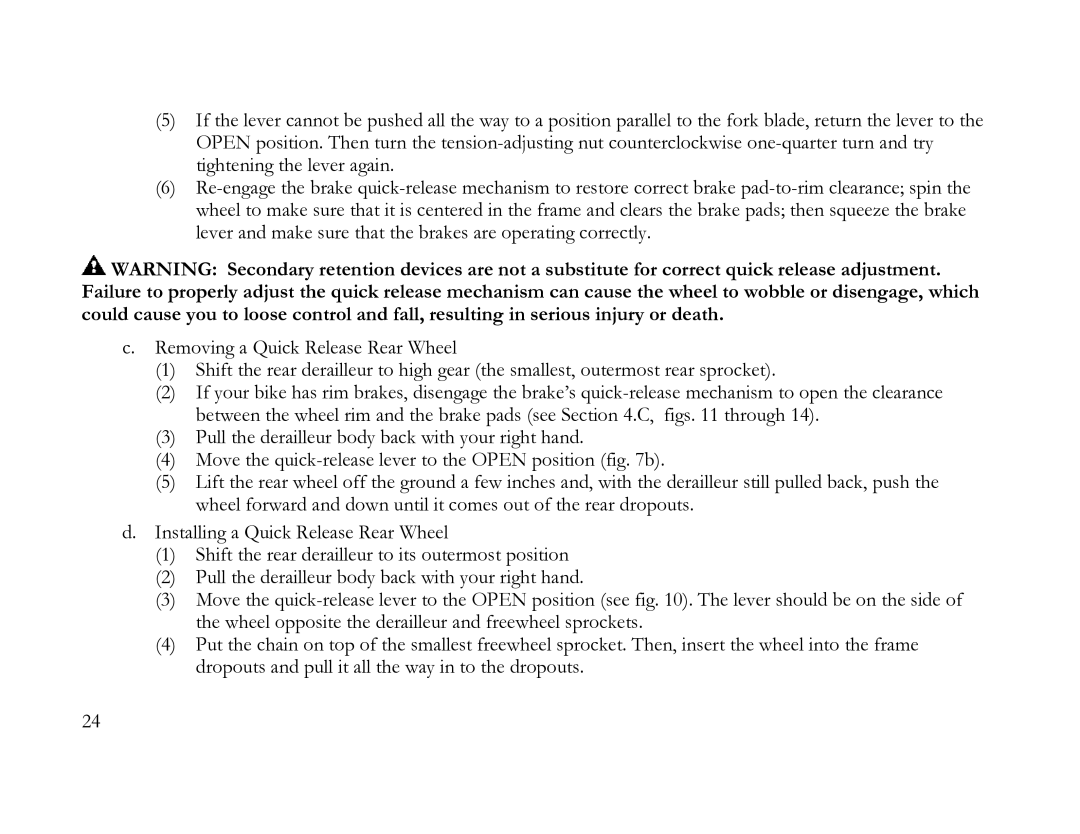(5)If the lever cannot be pushed all the way to a position parallel to the fork blade, return the lever to the OPEN position. Then turn the
(6)
![]() WARNING: Secondary retention devices are not a substitute for correct quick release adjustment. Failure to properly adjust the quick release mechanism can cause the wheel to wobble or disengage, which could cause you to loose control and fall, resulting in serious injury or death.
WARNING: Secondary retention devices are not a substitute for correct quick release adjustment. Failure to properly adjust the quick release mechanism can cause the wheel to wobble or disengage, which could cause you to loose control and fall, resulting in serious injury or death.
c.Removing a Quick Release Rear Wheel
(1)Shift the rear derailleur to high gear (the smallest, outermost rear sprocket).
(2)If your bike has rim brakes, disengage the brake’s
(3)Pull the derailleur body back with your right hand.
(4)Move the
(5)Lift the rear wheel off the ground a few inches and, with the derailleur still pulled back, push the wheel forward and down until it comes out of the rear dropouts.
d.Installing a Quick Release Rear Wheel
(1)Shift the rear derailleur to its outermost position
(2)Pull the derailleur body back with your right hand.
(3)Move the
(4)Put the chain on top of the smallest freewheel sprocket. Then, insert the wheel into the frame dropouts and pull it all the way in to the dropouts.
24
